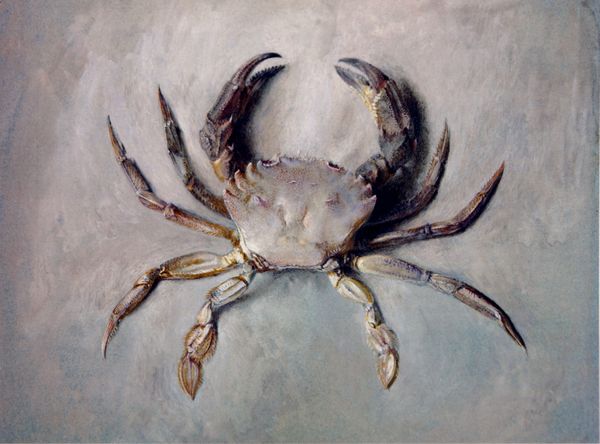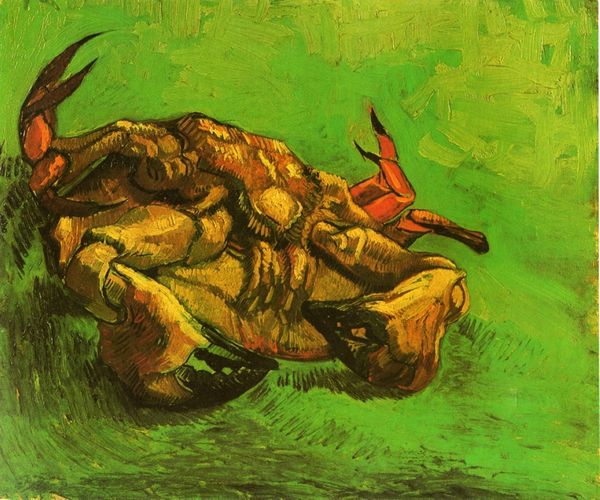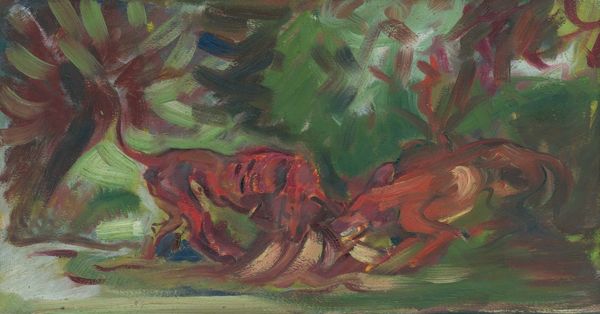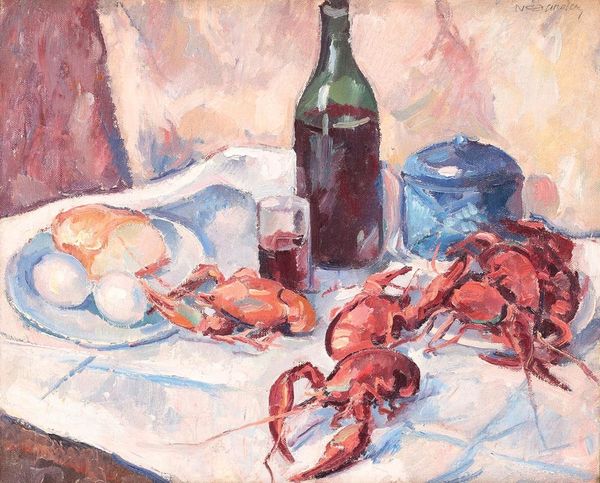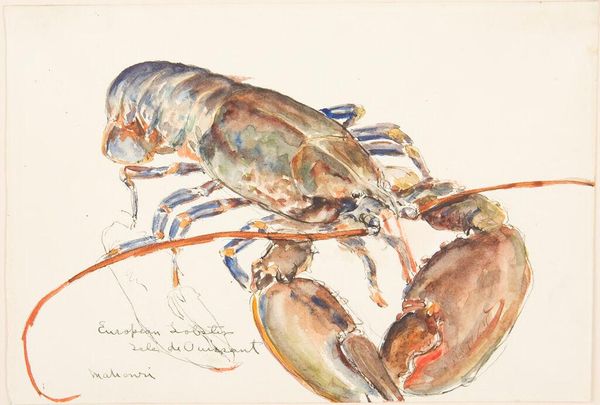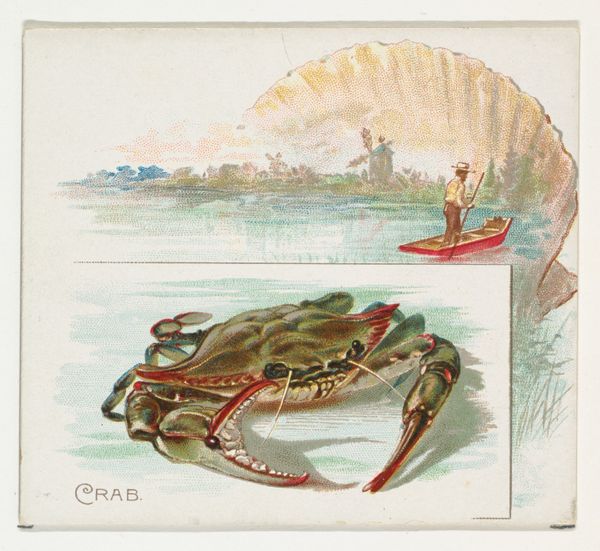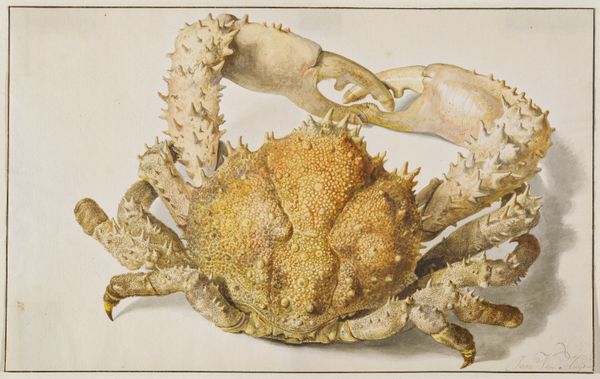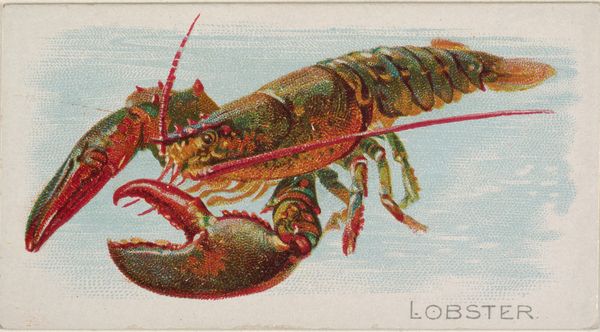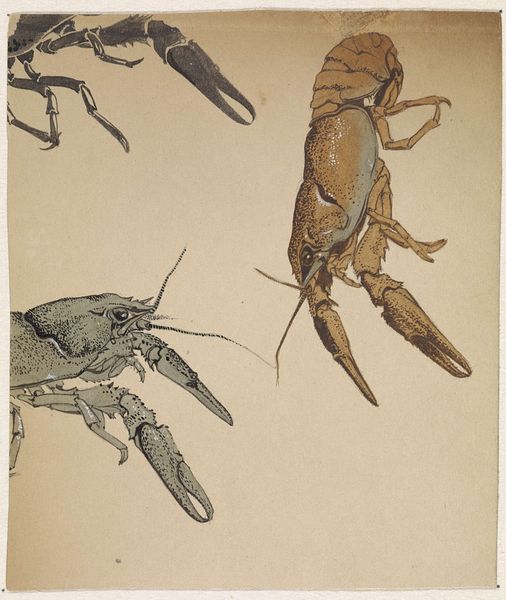
Copyright: Public domain
Curator: Looking at van Gogh's "Two Crabs," painted in 1889 with oil paint, what strikes you most immediately? Editor: They seem…vulnerable? Against that almost aggressively green background, they feel so exposed, upside down and somehow both comical and sad. The one on the top is so clearly on its back, defenseless. I mean, crabs aren't known for being cute or cuddly but these guys just inspire immediate empathy. Curator: It's interesting that you mention vulnerability. Painted while van Gogh was institutionalized at Saint-Rémy, these crabs present a compelling material counterpoint: the hard shell meant to protect contrasted with their overturned position. The flattening of perspective and use of impasto—look at how thick the paint is!—creates an intensity, pushing us to really consider the animal itself and perhaps to reconsider our relationship with the subject as it exists within the canvas but also without, as it moves towards the viewer, too. Editor: Definitely! And there’s a raw energy in those brushstrokes, a feverish quality that translates to the frantic nature of these crustaceans as they are flipped over to lie upside down. It’s not a restful painting. It's evocative of human pain. Was van Gogh, during a particularly dark moment of being "institutionalized," creating a painful double image of self? The comparison just kind of hit me... Curator: Some scholars suggest a symbolic link to van Gogh’s emotional state during his stay in the asylum, and to the theme of vulnerability he kept circling back to. But also, if we consider its place among works of the time that took a great interest in both local production of artworks and global commodity markets for resources required to produce art such as this oil-on-canvas rendering, what does it suggest? The paint itself had to come from somewhere. What can these objects teach us? Editor: True. The vibrant colors almost mask the deeper discomfort it provokes. I think I needed this discomfort. Seeing these creatures up close with such sensitivity makes me want to learn more about these creatures and more about his art, and more about the whole process! Curator: I agree, art-making makes me think about making art. It’s amazing how a seemingly simple still life can reveal complex narratives about production, being and seeing.
Comments
No comments
Be the first to comment and join the conversation on the ultimate creative platform.
